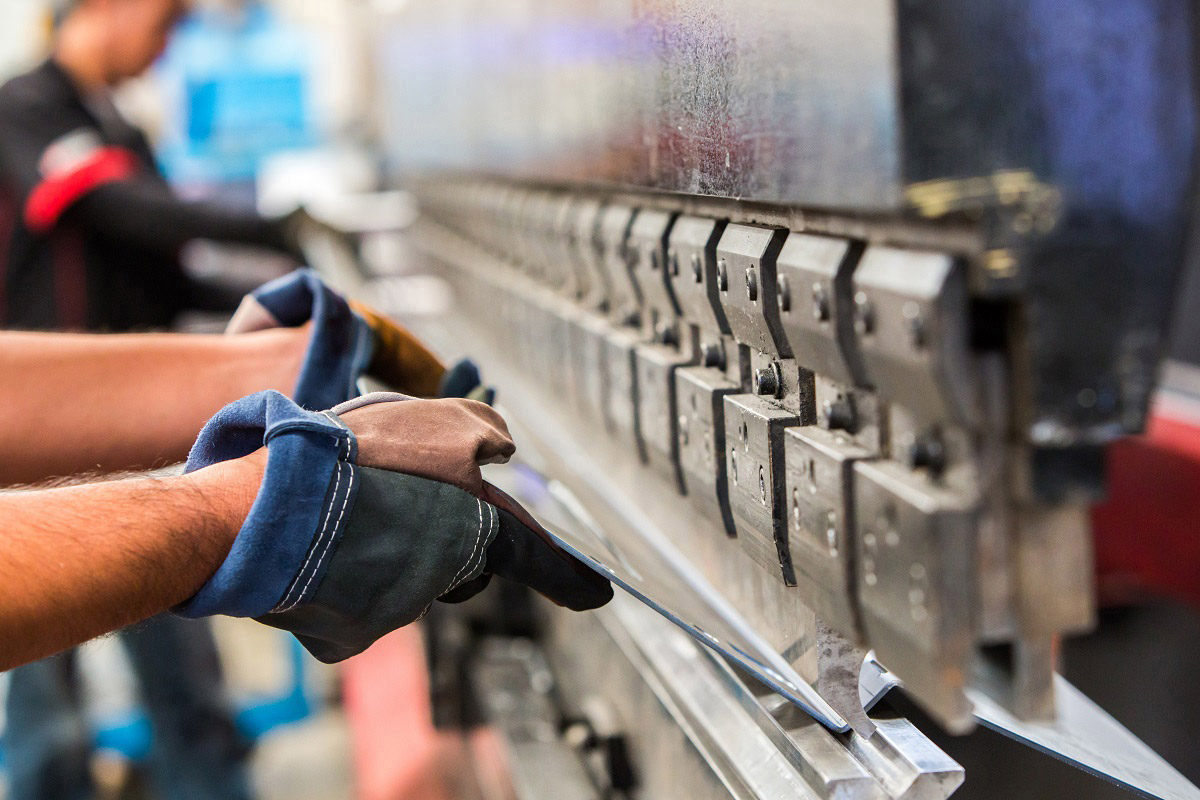Metal Stamping: Developments Driving Sector Development
Metal Stamping: Developments Driving Sector Development
Blog Article
Metal Stamping Technologies: Elevating Production Processes for Superior Results
In the realm of manufacturing procedures, steel marking has actually long been a foundation strategy for creating a range of accuracy components. With the unrelenting march of technological development, the landscape of metal stamping is undertaking a substantial improvement.
Development of Metal Marking Techniques

In addition, developments in product science have actually resulted in the development of high-strength alloys that can currently be flawlessly stamped right into complex shapes, accommodating a wider range of commercial applications. The integration of robotics and fabricated intelligence has further maximized the marking procedure by enhancing rate and accuracy while lowering the danger of human mistake.

Influence of Advanced Materials
Have innovative products transformed metal marking processes significantly in the production industry? The solution is an unquestionable yes (Metal Stamping). The integration of sophisticated products has actually reinvented metal marking, enabling manufacturers to achieve higher precision, boosted efficiency, and boosted item quality. By utilizing products such as high-strength alloys, progressed composites, and ingenious coverings, steel marking processes can currently generate parts that are lighter, more powerful, and a lot more long lasting than in the past.
These sophisticated products use premium mechanical residential properties, rust resistance, and thermal security, allowing producers to satisfy the needs of modern industries such as aerospace, auto, and electronic devices. In addition, making use of sophisticated products in steel stamping has actually promoted the production of intricate geometries and elaborate layouts that were previously unattainable through traditional techniques.
In addition, the execution of advanced products has led to minimized product waste, lower manufacturing prices, and shorter preparations, making metal stamping processes a lot more lasting and affordable. As technology continues to advance, the influence of innovative materials on metal marking processes is anticipated to drive more innovation and improve the competition of manufacturers in the global market.
Automation in Steel Stamping
The evolution of metal stamping processes driven by the integration of sophisticated products has actually established the phase for significant innovations in automation within the production industry. Automation in metal marking has actually transformed production processes, improving efficiency, accuracy, and overall result top quality. Through the use of robotics, sensors, and computer-controlled systems, jobs that were once hand-operated and taxing can currently be performed with exceptional speed and accuracy.
Automation in metal marking not only accelerates production prices yet also guarantees consistency in the manufacturing process. By lessening click to read human treatment, the danger of errors is substantially lowered, leading to higher levels of item uniformity and integrity. Additionally, automation allows manufacturers to take on complicated marking jobs that would be not practical or difficult to attain by hand.
In addition, automation in steel stamping adds to a much safer working atmosphere by decreasing the requirement for employees to participate in recurring or harmful tasks - Metal Stamping. This change in the direction of automation not just boosts productivity but likewise leads the means for the future of manufacturing, where technology plays a main role in driving operational quality
High Quality Control and Assessment Systems
With an emphasis on precision and reliability, quality assurance and inspection systems play a crucial role in making certain item quality in steel stamping processes. These systems are developed to monitor every stage of manufacturing, from material evaluation to the final product, to assure that all components satisfy the called for standards. By applying innovative technologies such as optical examination systems, coordinate determining devices (CMM), and automated evaluating devices, manufacturers can detect also the tiniest inconsistencies in measurements, surface area high quality, and general integrity of stamped parts.

Sustainability Practices in Metal Stamping
Building upon the structure of accuracy and integrity developed with quality control and inspection systems, the assimilation of sustainable techniques in metal marking procedures is increasingly becoming a prime focus for suppliers looking for to reduce environmental influence and maximize resource utilization. Sustainability practices in metal stamping incorporate a variety of campaigns focused on minimizing waste generation, energy consumption, and greenhouse gas discharges throughout the manufacturing procedure.
One key facet of sustainability in metal marking is the adoption of environment-friendly materials and innovations that promote recyclability and waste decrease. By utilizing recycled products and applying energy-efficient machinery, manufacturers can lower their carbon impact and add to a much more lasting production cycle. Furthermore, optimizing production processes to reduce product waste and energy usage not only benefits the atmosphere yet likewise causes cost savings for businesses in the future.
In addition, the execution of lasting methods in steel marking can improve brand name online reputation and charm to eco mindful customers. As sustainability remains to gain relevance in the manufacturing sector, integrating environmentally friendly initiatives into steel marking processes is crucial for lasting success and competition out there.
Conclusion
To conclude, steel stamping methods have substantially developed in time, including advanced products and automation to improve making processes. Quality control and examination systems play a crucial function in making sure exceptional results, while sustainability practices are increasingly being implemented to lower environmental effect. These technologies see here now in metal stamping have actually changed the sector, resulting in a lot more effective and sustainable manufacturing methods for different industries.
Metal marking, as soon as a manual and labor-intensive procedure, has changed right into an extremely automated and innovative technique of shaping steel sheets right into different forms and layouts.Have sophisticated products transformed steel marking procedures substantially in the manufacturing sector? By using products such as high-strength alloys, progressed compounds, and ingenious finishings, metal marking processes can now generate parts that are lighter, more powerful, and a lot more durable than ever previously.
The development of steel stamping procedures driven by the integration of sophisticated products has actually set the stage for substantial advancements in automation within the manufacturing industry.In verdict, steel stamping techniques have actually significantly advanced over time, integrating sophisticated products and automation to enhance making procedures.
Report this page